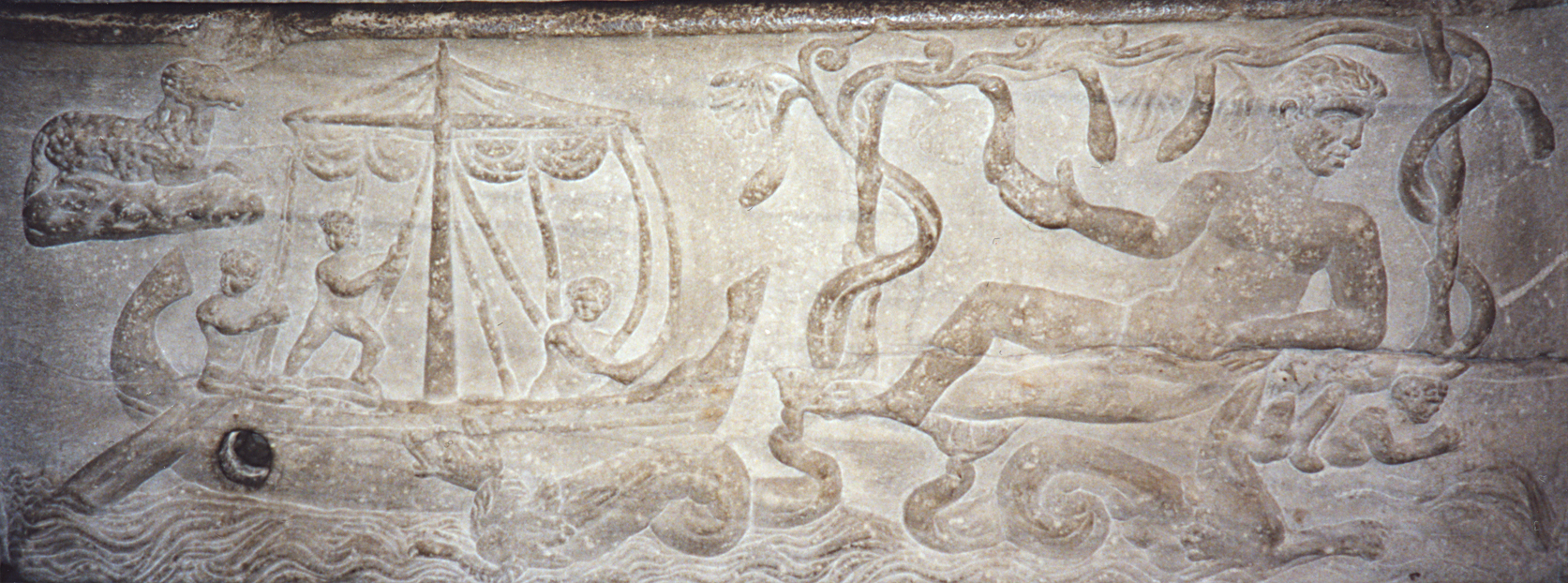Color Plates
Jonah
 British Museum, London, England, Marble sarcophagus. Fifth to sixth centuries. Jonah. At the bottom of the image, the serpent waits to swallow the prophet, then spits him up on land. On the right, he reclines under his vine.
British Museum, London, England, Marble sarcophagus. Fifth to sixth centuries. Jonah. At the bottom of the image, the serpent waits to swallow the prophet, then spits him up on land. On the right, he reclines under his vine.
See Saving Paradise, ix, 61, 62.
The relief carvings can be read like a non-linear cartoon strip depicting several scenes from the story of Jonah. The left scene shows sailors trimming the sails to handle the onset of a bad storm (Jonah 1:4). At his request, the sailors throw Jonah overboard to still the storm (Jonah 1:12-16). God sends “a great fish” to rescue Jonah (Jonah 1:17). The sea serpent can be seen swimming along side the boat. In the bottom right, Jonah is shown half way out of the serpent’s maw. The dominant upper right image shows Jonah, having been spit up onto dry land, reclining under his gourd vine. (Jonah 4:6) The image replicates depictions of the Greek god Endymion resting in paradise. In the far upper left corner a lamb--representing Jesus and/or the Christian interred in the sarcophagus--sits on a meadow observing the scene.
The story can be read in a three fold way: as the story of Jonah’s rescue, as the story of Jesus’s resurrection, and as assurance to the deceased that “today you will be with me in paradise.” (Luke 23:43)
“I went down to the land whose bars closed upon me for ever; yet though didst bring up my life from the Pit, O Lord my God.” (Jonah 2:6)